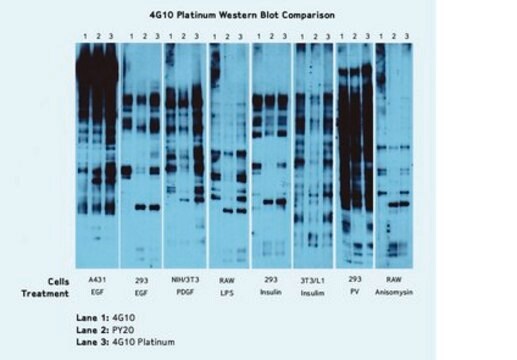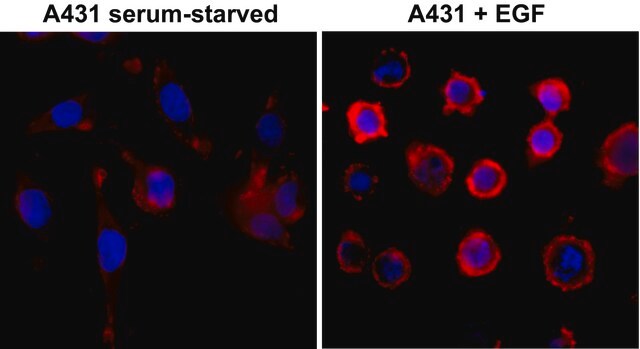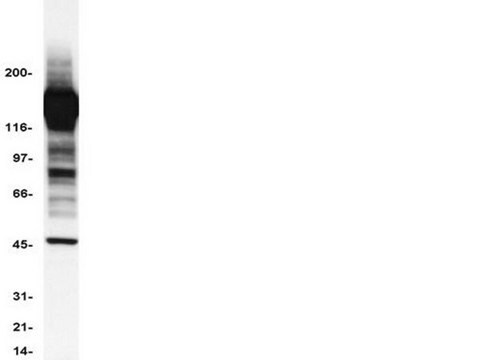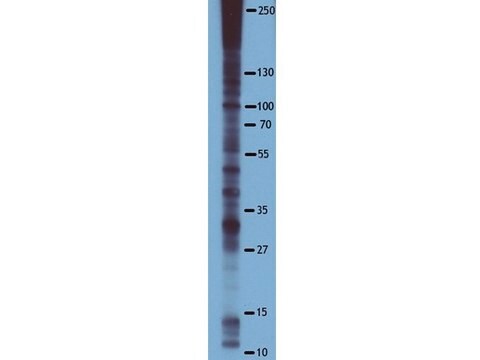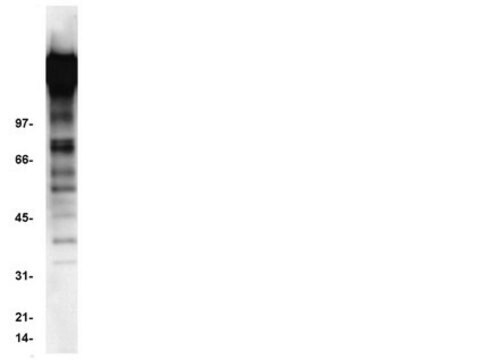16-316
Anti-Phosphotyrosine Antibody, 4G10® Platinum, HRP Conjugate
Upstate®, from mouse, peroxidase conjugate
Synonym(s):
phosphotyrosine
About This Item
Recommended Products
biological source
mouse
Quality Level
conjugate
peroxidase conjugate
antibody product type
primary antibodies
clone
4G10®, monoclonal
PY20, monoclonal
species reactivity (predicted by homology)
all
manufacturer/tradename
Upstate®
technique(s)
ELISA: suitable
western blot: suitable
isotype
IgG2b
shipped in
wet ice
target post-translational modification
phosphorylation (pTyr)
Gene Information
human ... PID1(55022)
General description
Application
Quality
Target description
Physical form
Legal Information
Not finding the right product?
Try our Product Selector Tool.
Hazard Classifications
Aquatic Chronic 2 - Skin Sens. 1
WGK
WGK 3
Flash Point(F)
does not flash
Flash Point(C)
does not flash
Certificates of Analysis (COA)
Search for Certificates of Analysis (COA) by entering the products Lot/Batch Number. Lot and Batch Numbers can be found on a product’s label following the words ‘Lot’ or ‘Batch’.
Already Own This Product?
Find documentation for the products that you have recently purchased in the Document Library.
Our team of scientists has experience in all areas of research including Life Science, Material Science, Chemical Synthesis, Chromatography, Analytical and many others.
Contact Technical Service